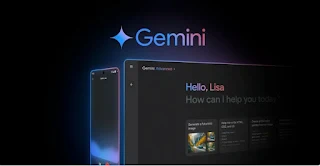Apple is currently beta testing iOS 18.1, the latest iteration of its mobile operating system, with developers. Expected to be released in October, iOS 18.1 promises to deliver a plethora of exciting new features, including significant enhancements to Apple Intelligence, the company's suite of artificial intelligence capabilities. In this article, we will delve into the details of iOS 18.1, exploring its new features, release date, and more.
Apple Intelligence: A Suite of AI-Powered Features
Apple Intelligence, first announced at WWDC in June, is a comprehensive suite of artificial intelligence features designed to enhance the overall user experience. The first set of Apple Intelligence capabilities is included in iOS 18.1, which promises to revolutionize the way users interact with their iPhones.
Writing Tools: Simplifying Text Editing
One of the most notable features of iOS 18.1 is the introduction of Writing Tools, a suite of AI-powered editing capabilities that enable users to rewrite, proofread, and summarize text with ease. The available options in iOS 18.1 include:
- Rewrite
- Proofread
- Make Friendly
- Make Professional
- Make Concise
- Summarize
- Create Key Points
- Make List
- Make Table
- Reduce Interruptions
Reduce Interruptions: A New Focus Mode
Reduce Interruptions is a new Focus mode in iOS 18.1 that leverages AI to show users only notifications that require immediate attention. This feature behaves similarly to other Focus modes in iOS, allowing users to set different apps and contacts from which they always want to receive notifications.
Photos App Enhancements
The Photos app in iOS 18.1 has received several significant updates, including a new Clean Up feature that enables users to remove distracting objects and people from their photos with a single tap. Additionally, users can now create memories on demand by simply typing a description, and Apple Intelligence will select the most suitable photos and videos to construct a storyline.
New Siri Design and Features
iOS 18.1 introduces an all-new design for Siri, featuring a glowing light that wraps around the edge of the screen when Siri is active. The update also adds the ability to switch between text and voice for Siri by double-tapping the home indicator at the bottom of the iPhone. Furthermore, Siri can now provide detailed answers to questions about Apple products and software, and is better at keeping up with users when they stumble over words or change their request midway through.
Mail App Upgrades
The Mail app in iOS 18.1 includes several new Apple Intelligence features, including a "Priority Messages" section at the top of the inbox, which shows the most urgent emails. Additionally, the app now includes a summary of each message instead of just a preview of the first few lines of the email.
Transcription Summaries and Notification Summaries
iOS 18.1 brings advanced summaries support powered by Apple Intelligence, enabling users to get a summary of audio recordings in the Notes app. The update also introduces notification summaries, which automatically summarize multiple notifications from Mail or Messages, allowing users to get a recap without having to tap and read every message.
NFC Access for Third-Party Apps
In addition to Apple Intelligence features, iOS 18.1 will open up the iPhone's NFC chip to third-party developers for the first time. This means that third-party developers will be able to access the iPhone's NFC chip for contactless features in their apps, including in-store payments, car keys, and more.
Release Date and Availability
While Apple has not officially announced a release date for iOS 18.1, it is expected to be released in October. The update will be available for all compatible iPhone devices, and users can expect a seamless and intuitive experience with the new features and enhancements.
In conclusion, iOS 18.1 promises to deliver a plethora of exciting new features and enhancements, including significant updates to Apple Intelligence, the Photos app, Siri, and more. With its expected release in October, users can look forward to a more polished and feature-rich operating system that will further cement Apple's position as a leader in the tech industry.












.jpg)












